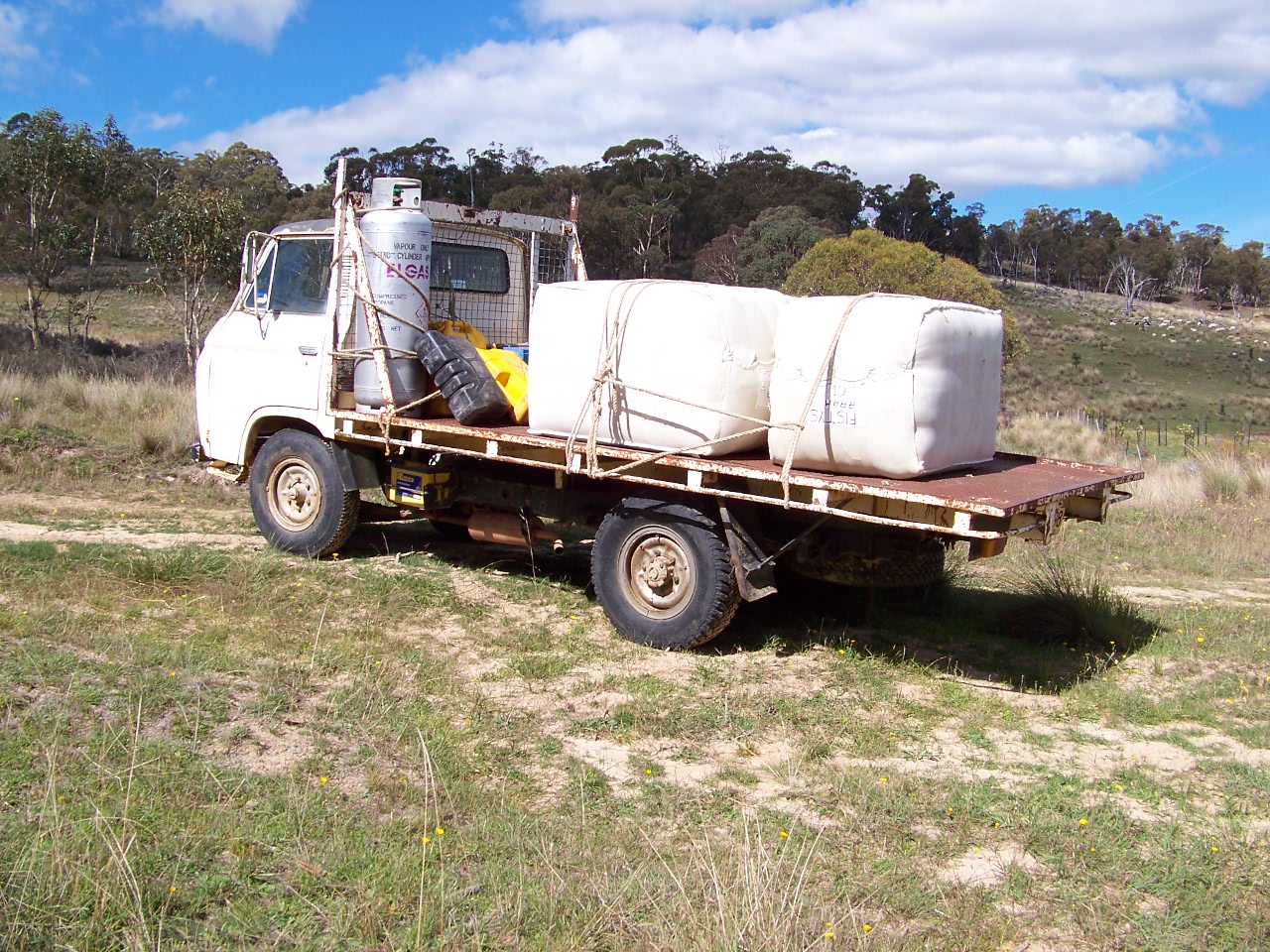The
versatile Nissan Caball
This is a 1978 Caball C340. Some years
ago I was using it to cart firewood into the Canberra
market. The compact nature of the Caball often became
very useful as many customers wanted their order of
firewood tipped in the back yard and often the access
was along the driveway at the side of the house and had
been designed with the family car in mind.
I gave up the firewood business when the Labor
government in Canberra decided to discourage the burning
of wood for heating and imposed a punitive licensing fee
upon wood merchants. I was not prepared to pay their
excessive fee for the privilege of risking life and limb
for the very low hourly rate of return from wood
carting.
The hoist mechanism on this Caball is hydraulic and the
hydraulic pump is driven by a 12 volt motor running on
the vehicles 12 volt electrical system.
The device on the tray is my yard crane. the winding
mechanism is a hand operated device such as was
installed on every country railway station back in the
1950's.
There is a date of 1855 molded into the casting of the
frame.
1978 Nissan Caball C340
What is the difference?
The entry on Nissan Caball trucks in Wikipedia suggests that the C340 truck was built on the same chassis as the C240. These photos are of trucks in my own collection and show that the two models are built on totally different chassis. This was necessary because of the difference in the rear axle configuration.
The C240 has
single wheels at the rear and the chassis is flared outward
from the narrow width inside the cab where it provides
attachments for the engine mounts to a maximum width between
the rear single wheels. This is done to improve the stability
of the truck when loaded to capacity. In an attempt to improve
stability, Nissan recommended 72 pounds of air pressure in the
rear tyres.
Interior fit-out is much updated from the C240 but the windscreens are the same, the doors on the later C240's will fit onto the C340 cabin but the fitment of the cabins to the chassis is not the same and they are not interchangeable.
Now August 2013. I notice that the entry in
Wikipedia has been updated and refers to the C340 as being
"completely new". Near enough.
1968 Nissan Caball C240

Loaded up
and ready to go to town. Maybe the last of its kind to be
still earning a living, taking a mixed load out and expecting
to bring another mixed load back. Gas cylinder for cooking
gas, jerry cans for petrol and diesel for tractors and
generators. Three bales of wool total about half a tonne and
provide the weight needed to get traction to get up the hills
on the tracks that pass for roads in N.S.W.
This truck has done less than eight thousand miles on a rebuilt engine, H20 engine and I rebuilt it myself, and averages 18 miles to the gallon. On a long trip once on the highway it might do 22 miles to the gallon.
If you see
me, give a call on UHF 40. But be warned that sometimes I have
the rock and roll music on my cassette player up so loud that
I do not hear the 2 way.
Here are a few of my Caballs. The two on the
left are C240's and the one on the right is a C340. On the
C240 the identification is a die-cast zinc device. For the
C340 it was replaced with a plastic name plate held in place
with double sided sticky tape. With age the sticky tape
fails and the name plate is now in the shed for safe
keeping.
Use Number 1140 for a Nissan Caball
When the truck was
left parked in the paddock on a hot day, a couple of
Merino rams found that it provided some welcome shade
from the midday sun.
Earlier I showed
the rear view of a C340 to illustrate the difference
between the C240 and the C340.
The
blue C340 was purchased as an abandoned project
quite a few years ago and I am trying to find time
to get it going. Early in June I installed a
five-speed gearbox into it.
The chap I bought it from had got hold of
it after the wiring burnt out and he had not
touched the wiring. While I have sorted out the
wiring enough to get it running, still has a lot
to be done before it can be submitted for rego
inspection.